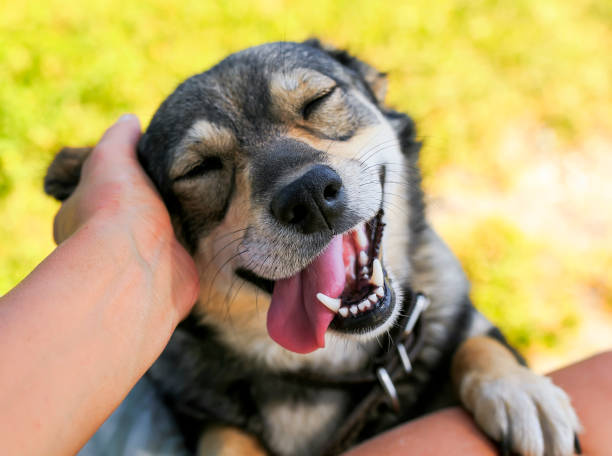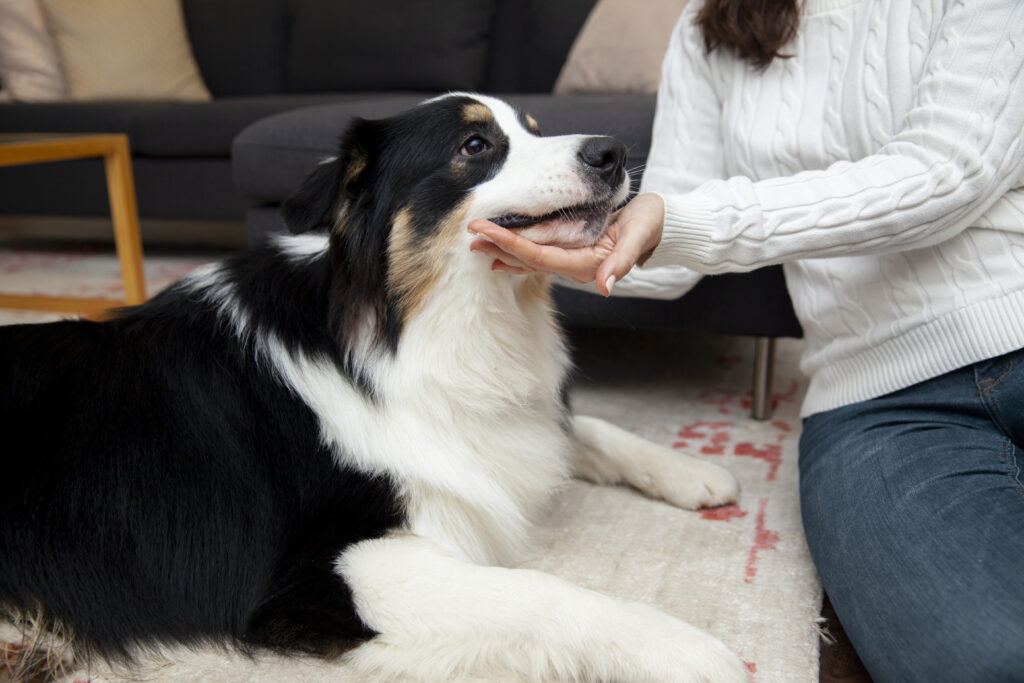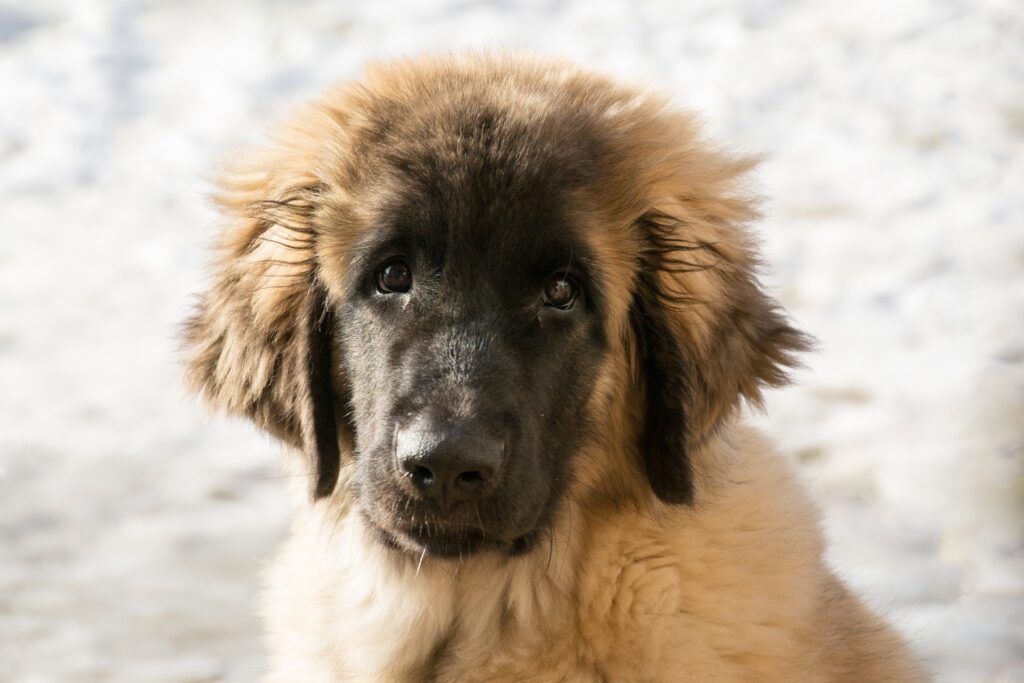
Have you noticed your furry friend shedding more than usual? Tufts of fur on your furniture, paw prints galore – it can be alarming to see your dog losing hair. Don’t worry, pet parent, you’re not alone! Hair loss is a common concern for dog owners, and there are many reasons why it might be happening.
This article will be your guide to understanding: Why is my dog losing hair? We’ll explore the most common causes, how to identify them, and what you can do to help your furry friend feel and look their best.
Here are some of the key questions we’ll answer:
- Is my dog’s hair loss normal shedding, or something more serious?
- What are the different causes of hair loss in dogs?
- How can I tell what’s causing my dog’s hair loss?
- What can I do to treat my dog’s hair loss?
So, grab your favorite dog treat, cuddle up with your pup, and let’s dive in!
Shedding vs. Hair Loss: What’s the Difference?
First things first, it’s important to understand the difference between normal shedding and hair loss. Shedding is a natural process for all dogs. Their fur grows in cycles, and old hairs eventually fall out to make way for new ones. The amount of shedding can vary depending on the breed, climate, and even your dog’s age.
Also Read: 10 Common Pet Behavior Problems and Solutions: Decoding Your Furry Friend
Here are some signs of normal shedding:
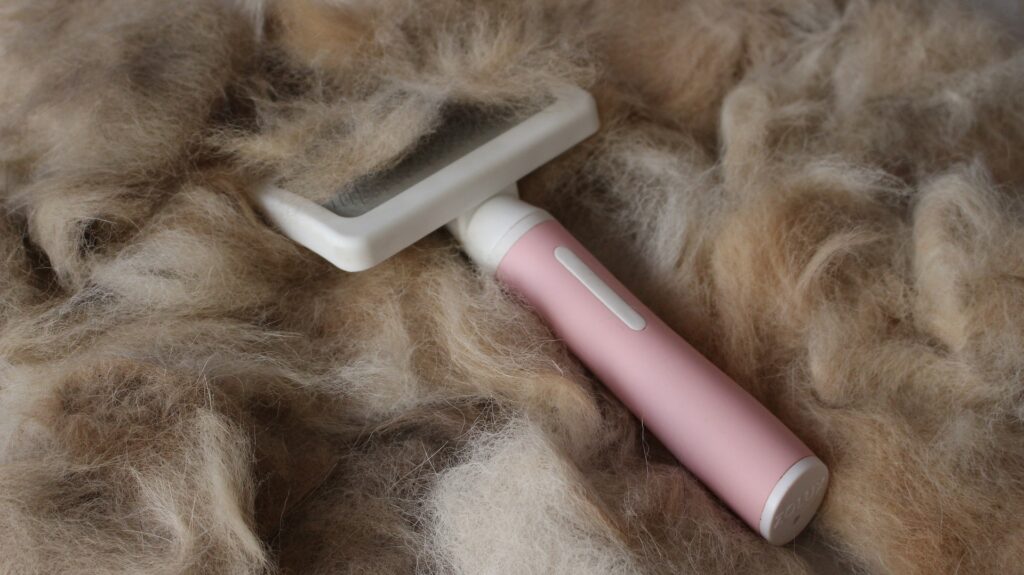
- Seasonal shedding: Many dogs shed more heavily in the spring and fall as their coats adjust to the changing seasons.
- Light, fluffy fur: If the fur your dog is losing is light and fluffy, it’s likely just normal shedding.
- No bald patches or irritation: Normal shedding shouldn’t cause any bald patches or irritation on your dog’s skin.
Hair loss, on the other hand, is excessive shedding that results in bald patches, redness, or flaking on your dog’s skin. This can be a sign of an underlying health condition and needs to be checked out by a vet.
Unmasking the Culprits: Common Causes of Dog Hair Loss
There are many reasons why your dog might be losing more hair than usual. Here are some of the most common culprits:
- Allergies: Just like people, dogs can also suffer from allergies. These allergies can be caused by food, environmental triggers like pollen, or even flea bites. If your dog has allergies, it can lead to itchy skin and hair loss.
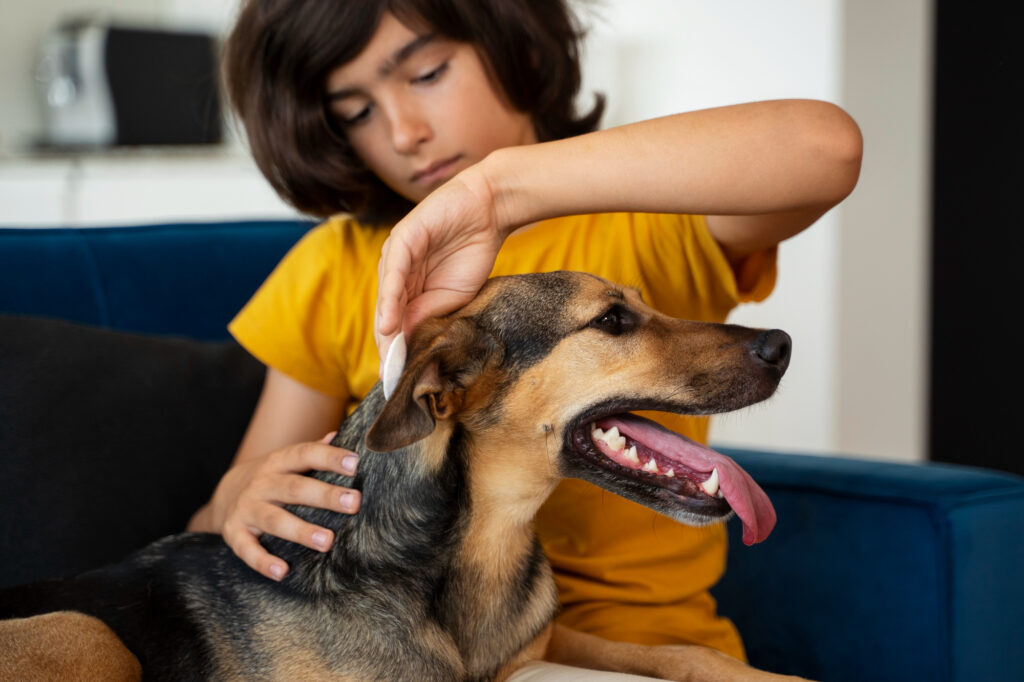
- Skin infections: Bacterial or yeast infections can irritate your dog’s skin, causing them to scratch and lick excessively, which can lead to hair loss.
- Parasites: Fleas, mites, and other parasites can irritate your dog’s skin and cause hair loss. Be sure to keep your pup on a regular flea and tick preventative medication.
- Hormonal imbalances: Certain hormonal imbalances, such as hypothyroidism or Cushing’s disease, can cause hair loss in dogs.
- Stress: Stressful events, like moving to a new home or a change in routine, can also cause temporary hair loss in some dogs.
- Nutritional deficiencies: A lack of essential nutrients in your dog’s diet can lead to a variety of health problems, including hair loss.
Also Read: Understanding The Reasons: Why Is My Dog Panting So Much? A Comprehensive Guide
Putting on Your Detective Hat: Identifying the Cause of Hair Loss
Unfortunately, there’s no one-size-fits-all answer to figuring out why your dog is losing hair. But there are some clues that can help you and your vet narrow it down. Here are some things to consider:
- The pattern of hair loss: Is it patchy hair loss, or is your dog losing hair all over? This can be a clue to the underlying cause.
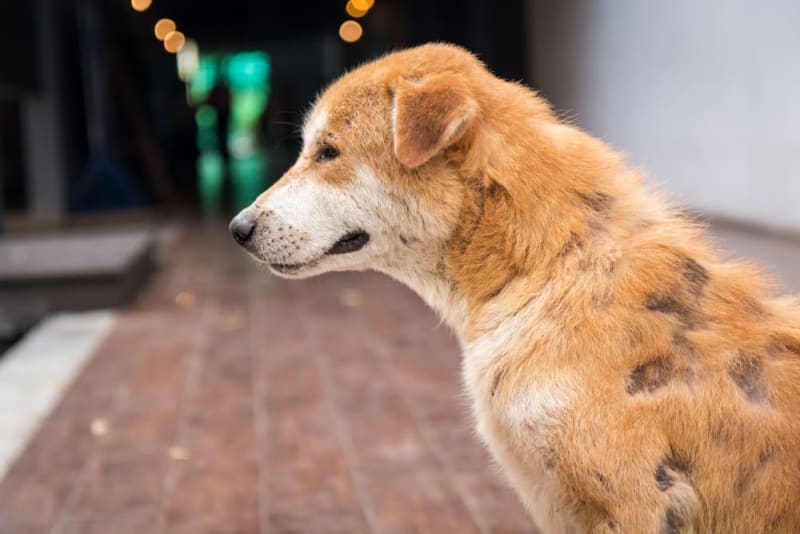
- Your dog’s age and breed: Certain breeds are more prone to certain types of hair loss.
- Other symptoms: Is your dog scratching a lot? Do they have any other skin problems, like redness or flaking?
- Recent changes: Has there been anything new in your dog’s environment or diet that might be causing them stress or an allergy?
The Path to a Healthy Coat: Treating Dog Hair Loss
The best way to treat your dog’s hair loss is to address the underlying cause. Your vet will be able to diagnose the problem and recommend the best course of treatment. This might include:
- Dietary changes: If your dog has a food allergy, your vet may recommend switching them to a hypoallergenic diet.
- Medications: Depending on the cause, your vet may prescribe medications like antibiotics, antifungals, or steroids to treat skin infections or allergies.
- Flea and tick prevention: Regular flea and tick prevention is essential for all dogs, but especially important if your dog has fleas or is prone to allergies.
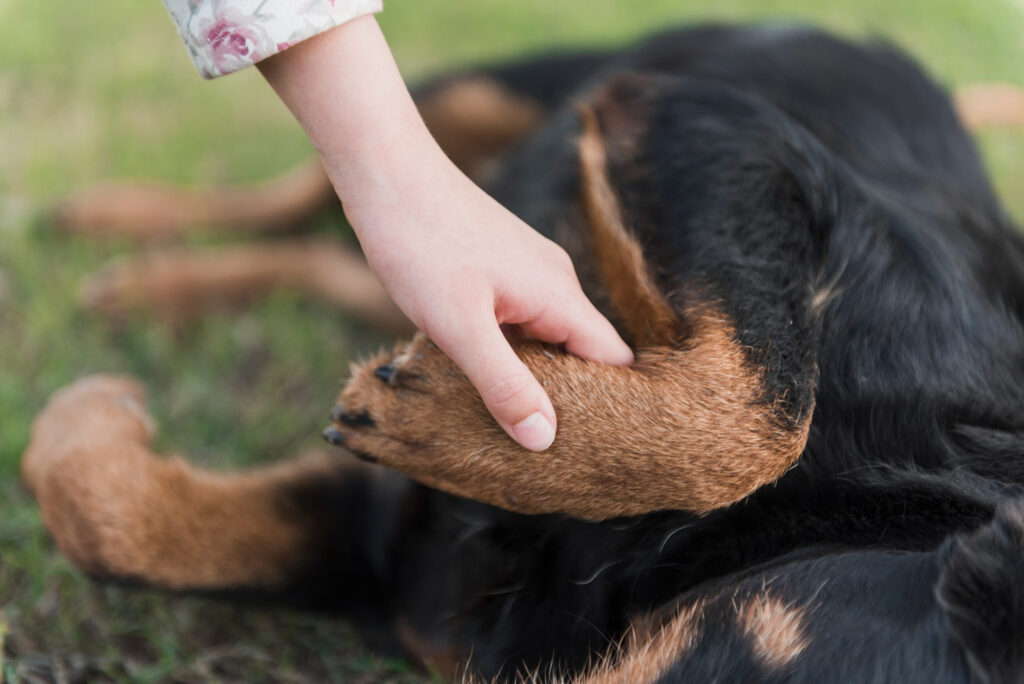
- Supplements: In some cases, your vet may recommend adding omega-3 fatty acids or other supplements to your dog’s diet to promote healthy skin and coat.
- Shampoos and conditioners: Medicated shampoos and conditioners can help to soothe irritated skin and promote healing.
Helping Your Pup From the Inside Out: Diet and Supplements for a Healthy Coat
What your dog eats plays a crucial role in their overall health, including the health of their skin and coat. Here are some tips for promoting healthy hair growth through your dog’s diet:
- High-quality food: Choose a dog food that is made with high-quality ingredients, including plenty of protein and healthy fats.
- Omega-3 fatty acids: Omega-3 fatty acids are essential for healthy skin and coat. You can add fish oil supplements to your dog’s food, or look for a food that is already rich in omega-3s.
- Stay hydrated: Make sure your dog is drinking plenty of fresh water to stay hydrated. This will help to keep their skin healthy and promote hair growth.
TLC Time: Brushing and Other Ways to Pamper Your Pooch
Brushing your dog regularly is a great way to remove loose fur and promote healthy hair growth. It also helps to distribute natural oils throughout their coat, which keeps it shiny and healthy.
Here are some additional tips for helping your dog’s hair loss:
- Gentle brushing: Use a soft brush and brush your dog gently to avoid irritating their skin.
- Bathing: Bathing your dog too often can actually dry out their skin and make hair loss worse. Unless your vet recommends otherwise, bathe your dog only when necessary with a gentle shampoo.
- Manage stress: Try to provide your dog with a calm and stable environment to help reduce stress, which can contribute to hair loss.
When to See the Vet: Don’t Delay!
If you notice any of the following signs, it’s important to see your veterinarian right away:
- Excessive hair loss: If your dog is losing hair more than usual, especially if it’s patchy or accompanied by other symptoms.
- Bald patches: Any bald patches on your dog’s skin are a cause for concern.
- Red, irritated skin: If your dog’s skin is red, inflamed, or itchy, it could be a sign of an infection or allergy.
- Lethargy or other changes in behavior: If your dog is losing hair along with other symptoms like lethargy, loss of appetite, or vomiting, it could be a sign of a more serious underlying condition.
Peace of Mind and a Shiny Coat: Final Thoughts
Hair loss in dogs can be a scary sight, but it’s important to remember that it’s often treatable. By understanding the different causes, paying attention to the signs, and seeking veterinary care when needed, you can help your furry friend get back to having a healthy, shiny coat.
Remember, you are your dog’s best advocate! By being observant and taking them to the vet for any concerning symptoms, you can ensure they live a long, happy, and healthy life with a beautiful coat to boot!
Here are some additional resources that you might find helpful:
- The American Kennel Club: https://www.akc.org/ This website has a wealth of information on dog health, including a section on hair loss.
- The Veterinary Partner: https://veterinarypartner.vin.com/ This website provides pet owners with information on a variety of veterinary topics, including skin conditions in dogs.
- The Association for Pet Dog Trainers: https://apdt.com/ If you think your dog’s hair loss might be related to stress or anxiety, a certified professional dog trainer can help you develop a training plan to address the issue.
With a little bit of knowledge and some TLC, you can help your dog overcome their hair loss and live their best life!
Why is My Dog Losing Hair? Hair Loss In Dogs: FAQs
Here are some frequently asked questions about dog hair loss:
- Is it normal for my dog to shed?
Absolutely! Shedding is a natural process for all dogs. Their fur grows in cycles, and old hairs eventually fall out to make way for new ones. The amount of shedding can vary depending on the breed (double-coated dogs typically shed more), climate (dogs tend to shed more in the spring and fall), and even your dog’s age (puppies and senior dogs may shed more).
- How can I tell the difference between normal shedding and hair loss?
Normal shedding typically involves light, fluffy fur and shouldn’t cause any bald patches or irritation on your dog’s skin. However, hair loss is excessive shedding that results in bald patches, redness, or flaking on your dog’s skin. If you notice any of these signs, it’s best to consult your veterinarian.
- What are some of the most common causes of dog hair loss?
There are many reasons why your dog might be losing more hair than usual. Some of the most common culprits include:
- Allergies (food, environmental, flea bites)
- Skin infections (bacterial or yeast)
- Parasites (fleas, mites, etc.)
- Hormonal imbalances (hypothyroidism, Cushing’s disease)
- Stress
- Nutritional deficiencies
- How can I identify the cause of my dog’s hair loss?
Unfortunately, there’s no one-size-fits-all answer. However, some clues can help narrow it down. Consider the pattern of hair loss (patchy vs. all over), your dog’s breed and age, any other symptoms (scratching, redness), and recent changes in diet or environment. Consulting your veterinarian is crucial for an accurate diagnosis.
- What are some treatment options for dog hair loss?
The best treatment depends on the underlying cause. Your vet will likely recommend addressing the root issue. This might involve dietary changes for allergies, medication for skin infections or parasites, flea and tick prevention, or supplements to promote healthy skin and coat.
- What kind of food should I feed my dog to promote a healthy coat?
Choose a high-quality dog food rich in protein and healthy fats. Look for foods containing omega-3 fatty acids, which are excellent for skin and coat health. You can also consider adding fish oil supplements to your dog’s diet after consulting with your vet.
- How often should I bathe my dog to help with hair loss?
Excessive bathing can actually dry out your dog’s skin and worsen hair loss. Unless your vet recommends otherwise, bathe your dog only when necessary with a gentle shampoo. Regular brushing, however, is highly recommended to remove loose fur and stimulate healthy hair growth.
- Can stress cause my dog to lose hair?
Yes, stress can contribute to hair loss in dogs. Events like moving to a new home, a new pet in the house, or changes in routine can trigger stress-related hair loss. Try to provide a calm and stable environment for your dog and address any stressors they might be facing.
- When should I see a vet about my dog’s hair loss?
If you notice excessive hair loss, patchy bald spots, red or irritated skin, lethargy, or other concerning symptoms alongside the hair loss, see your veterinarian right away. Early diagnosis and treatment are crucial for a healthy recovery.
- Are there any resources available to learn more about dog hair loss?
Absolutely! Here are a few credible resources you can explore:
- The American Kennel Club: https://www.akc.org/
- The Veterinary Partner: https://veterinarypartner.vin.com/
- The Association for Pet Dog Trainers: https://apdt.com/
